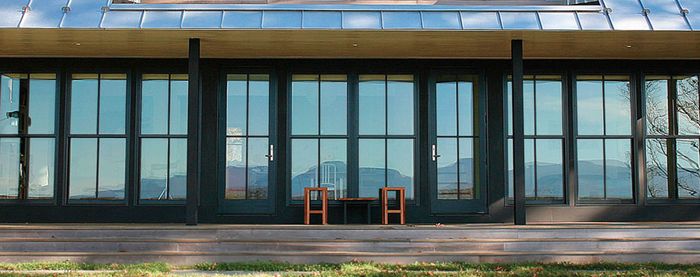How to Choose the Right Exterior Door
Choose muntins, glazing, sidelites, and decorative patterns to match the style of your home when buying a new front door.

Upgrading the front door is consistently listed among the top home-improvement projects for the greatest return on investment. In addition to enhancing a house’s curb appeal, it is the first design element people engage with upon arrival. So as you budget for the construction of a new home or a renovation project, consider setting aside a little extra for the front door. You can commission a custom design, but most people buy stock products. Here’s some advice for how to shop.
Front door basics
While there are seemingly endless variables for determining a door’s configuration, they are all based on a few design standards. Focus on doors with stiles and rails that range from 4 in. to 6 in. Look for clear glass without a bevel. Use simulated divided-lite (SDL) muntins. If SDL glazing is not an option, go without muntins rather than using grille-between-glass muntins. When selecting the proportion of lites in the glazing, be sure to relate that proportion to the window lites throughout the house.
The amount of glazing in your door will depend on the style of your house. Cottage designs often have a large percentage of glass over low panels, while Craftsman style doors have a small area of glass at the top with long vertical panels. Colonial homes typically feature five- or six-panel doors with either no glazing or glazing in place of small panels.

Sidelites
If you have room for only one sidelite in your design, go without. Also, avoid sidelites with glazing that extends all the way to the ground. Instead, end the glazing approximately three-quarters of the way down, and use a low panel for the remainder. Align the lites in the sidelites with those in the door. And when using sidelites with panel doors, align the panel under the sidelite with the lower panels in the door.

Transoms and sidelites

If you are combining sidelites, a transom, and lites in the door, take care to coordinate the proportion of the lites. The three elements should work well as a composition. The most common mistake is to use horizontal lites in the transom. Only add a transom if you have the height to match the proportions of the lites in the door and sidelites. Going without a transom is preferable to using one that results in a mishmash of proportions. The ideal design for combining glazing in sidelites, transoms, and the door is to match the lite size and proportion between all three elements.
 Decorative patterns and shapes
Decorative patterns and shapes

Many stock doors have etched glass, ovals, or arches for ornament. While these designs are inspired by traditional leaded-glass entry doors, they do not pass muster. Avoid them in all cases. Remember that with doors, as with most building elements, less is more.
Marianne Cusato is the author of Get Your House Right: Architectural Elements to Use and Avoid. Drawings by the author.
More about exterior doors:
Fine Homebuilding Recommended Products
Fine Homebuilding receives a commission for items purchased through links on this site, including Amazon Associates and other affiliate advertising programs.

Code Check 10th Edition: An Illustrated Guide to Building a Safe House

A House Needs to Breathe...Or Does It?: An Introduction to Building Science

Graphic Guide to Frame Construction





